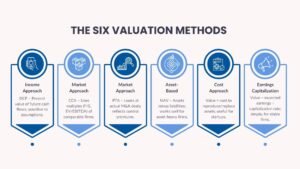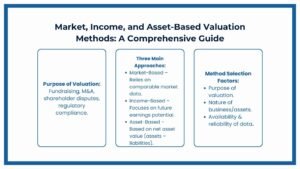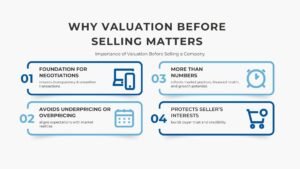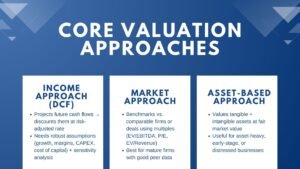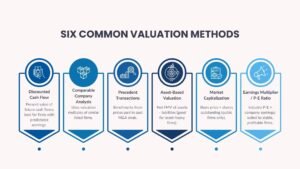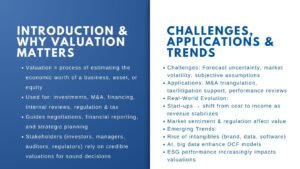
Certified Business Acquisition and Sale Training
How to Decide Whether to Buy or Sell a Company
Guide on Certified Business Acquisition and Sale Training
One of the most far reaching strategic decisions the business leaders face is the choice of whether to purchase or to sell a company. It is not about the financial calculations, but the evaluation of the long-term value generation, exposure to risks and aid of the business purpose. Whether it is a corporate executive looking for the way to grow by acquiring a company or an owner looking at exiting, exit requires a mix of analytical rigidity and strategy.
Timing of such decisions is always a factor in the success or the lost opportunity of success in the competitive market today, how to evaluate whether to buy or sell a company in Singapore may create optimal value based on economic cycles, industry trends and valuation shifts. In order to manoeuvre between these intricacies, it is vital to know how to estimate the inherent value of a company, its future and market placement. However, timing is not just about external conditions; it also requires internal readiness.
Companies must ensure that their financial statements, operational systems, and governance structures are well-prepared to support either acquisition or sale. The alignment of market timing with strategic business objectives ensures that the transaction does not only respond to temporary market fluctuations but creates long-term value for shareholders and stakeholders alike.
Evaluating the Case for Buying
The drivers should be based on strategy fit and quantifiable synergies when it comes to an acquisition. Acquisition by buyers is usually sought after so as to increase the product lines, or win market share; acquiring technology and talent. The initial one is the due diligence process which involves review of financial health, customers base, intellectual property and ability to scale its operations.
The importance of valuation is valuable. It is important that buyers should not only evaluate the earnings of the target but its cash flows in the future. Such models as Discounted Cash Flow (DCF) approach contribute to the estimation of intrinsic value, whereas such a benchmark as the market-based is offered by such scales as Comparable company analysis (CCA).
The other significant factor is to assess integration risk. A successful acquisition may still not be successful in case of poor management in terms of cultural, operational and systems integration. The strategic acquirers seek opportunities that will result in synergies that will lead to improved value to the combined entity through cost saving, or a wider scope of distribution or greater power to influence the price.
Assessing When Selling Makes Sense
Selling a firm may be an emotional and monetary achievement to owners. The generally accepted candidates can be determined by the outcome of the market valuation which can be optimistic, the liquidity needs of the investors or as a necessary step toward the subsequent phase of growth and expansion almost assured that the founder cannot meet the necessary capital and other resource requirements.
An excellent time to sell will allow the best possible valuation multiple, which can be in the form of EBITDA or revenue multiples. The owners need to examine whether the business has reached maturity or would require unequal reinvestment in future.
Professional valuation assists in creating a reasonable selling rate and creates expectations before proceeding to make a sale. Also, sellers are expected to be financially statement-ready, efficient with their operations, and they should be able to transfer any key contracts- factors that can bring more buyer confidence and more worth of its transactions.
Strategic Framework for Decision-Making
The buy versus sell decision is more advisable to be dealt in a systematic framework which will pay attention to the quantitative and qualitative aspect. Objective benchmarks are given in financial measures like an index of the level of profitability (ROI), internal rate of return (IRR) and payback period. Non-financial factors, however, such as continuity of leadership, cultural compatibility as well as strategic compatibility, tend to dictate post-transaction success.
Market timing should also be taken into consideration by the companies. Bull markets’ strategic framework for company acquisition and divestment decisions may be better to sellers who have high values but economic recessions can open up the acquisition at favourable prices. This is best done by matching the transaction with long term business strategy as opposed to short term market fluctuations. By considering both quantitative and qualitative factors, companies can make informed decisions that balance financial performance with strategic growth and operational sustainability.
Conclusion
The choice of selling or acquiring a company is a phenomenon that needs purpose clarity, an analytical mind and a strategic operation. However, the two strategies may result in development or change-but only in cases where the choice is made by the basis of data and valuation judgment as well as alignment to organizational objectives.
To the buyers, the emphasis should be put on recognizing new opportunities, which would be additional to the existing strengths, and create sustainable synergies. To the sellers, value maximization would be about planning in advance, appreciating the actual value, and doing it at the appropriate time.
In the end, however, success in these decisions does not consist in responding to market noise but in performing some value-driven strategy. The modern dynamic business world is one where individuals who understand how to master the art of timing and valuation place themselves in a position of creating exceptionally long-lasting success, be it the acquisition or divestment.


